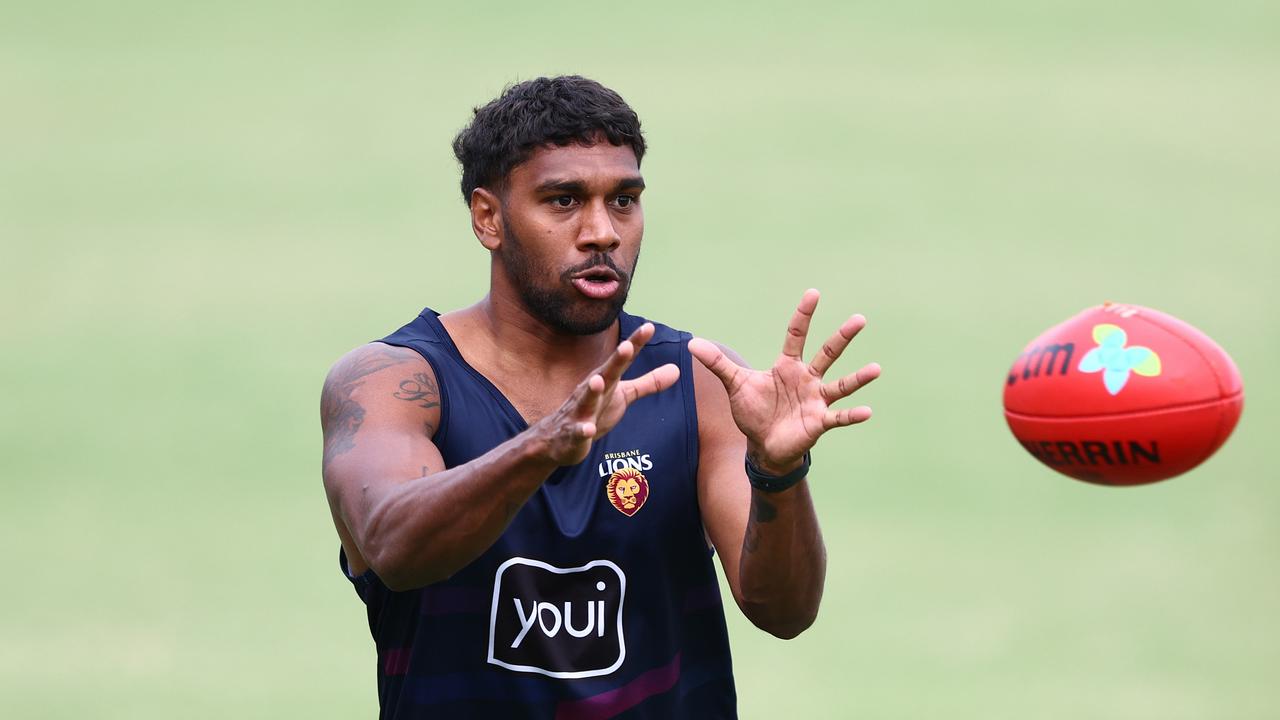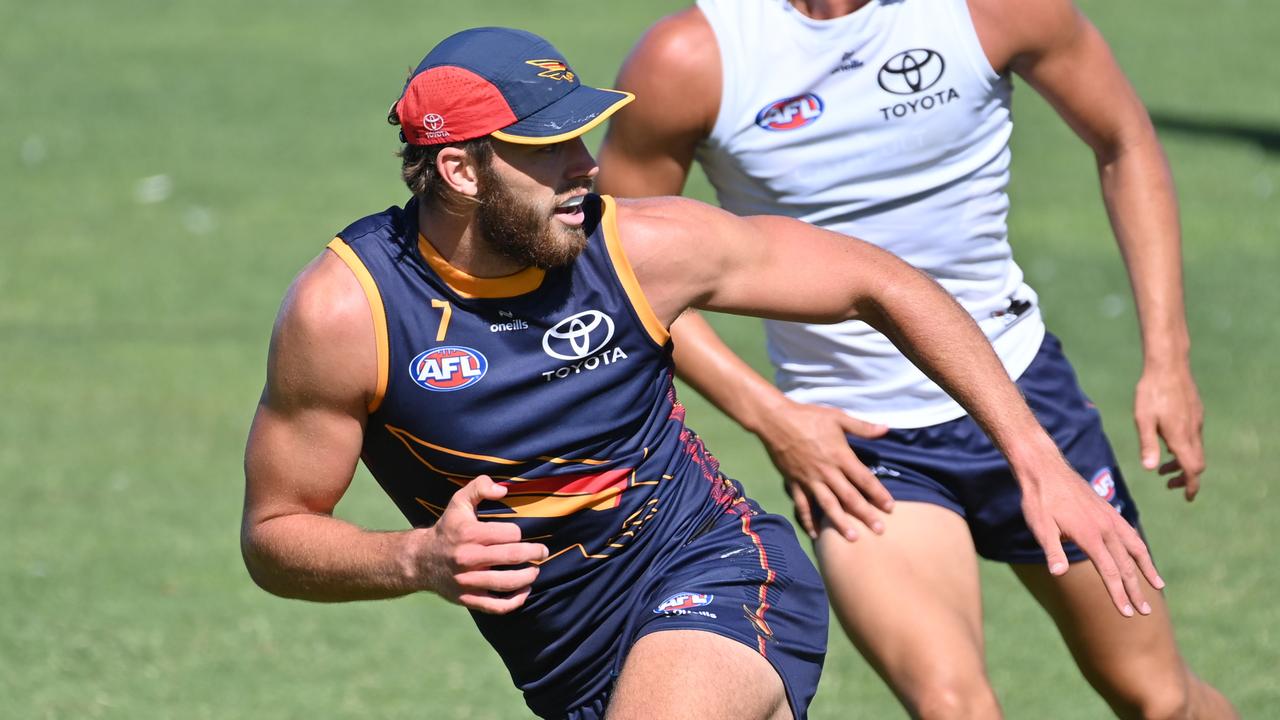Tribunal can’t see through concussion controversy and rule objectively anymore | Graham Cornes
Anyone with half a football brain can see that Powell-Pepper’s initial aim was not to bump, writes Graham Cornes.
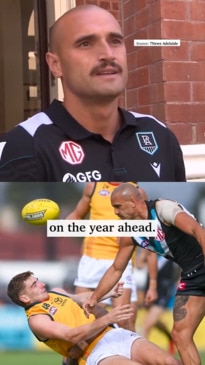
AFL
Don't miss out on the headlines from AFL. Followed categories will be added to My News.
There is no doubt Sam Powell-Pepper has been made a scapegoat by the AFL.
Spooked by the ever-increasing risk of litigation by ex-players seeking compensation for ill-defined and difficult to diagnose brain injuries, the AFL tribunal has overreacted.
The members of the tribunal certainly didn’t look at the vision objectively and even though their deliberation took 90 minutes, it’s hard to believe the verdict was not preordained.
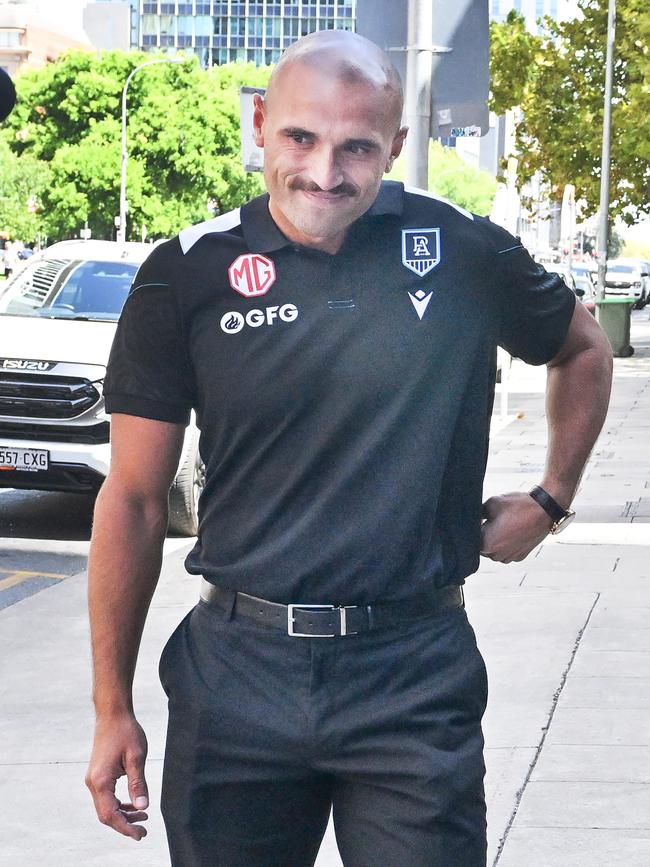
There had been too much controversy about concussion, too many conflicting interpretations of the Maynard/Brayshaw clash for the tribunal to rule objectively and impartially on the next case of headhigh contact that would come before it.
Sam Powell-Pepper has a reputation as a vigorous player but he is not a player who plays outside the rules or looks to injure or maim an opponent.
However, his fierce attacks on the ball and his determination to get the contest give an otherwise perception.
Such was the case with this latest incident which left Crows defender Mark Keane stunned. Subsequently Keane was subbed off under the concussion protocol.
However, anyone with half a football brain can see that Powell-Pepper’s initial aim was not to bump.
He was rushing to the contest in the manner that he always does as his teammate Willie Rioli tackled Keane and, in the process, spun him into Powell-Pepper’s path.
The momentum of both players meant contact was unavoidable.
Powell-Pepper’s initial intention may have been to assist in the tackle but in the end he reacted instinctively and braced for contact.
Unfortunately, that contact was high and Keane was knocked to the ground.
Viewing the incident in slow motion as the tribunal will do, always distorts the incident. Players don’t think or react in slow-motion.
They react in real time and have no opportunity to consider circumstances or outcome. This was not a deliberate punch or a raised elbow.
It was a football accident in which Powell-Pepper put himself in the wrong place at the wrong time with no intention to bump until he was forced to brace for the inevitable contact.
There was no free kick awarded.
What hasn’t been discussed and didn’t appear to be raised in the evidence presented to the tribunal was that in falling, Keane’s head hit the ground solidly.
Given that it’s still summer and the grounds are hard, that as much as anything, may have contributed to any concussion that Keane suffered.
The AFL is understandably spooked by this issue of concussion.
Of course it is concerned for the welfare of the players but the impeding class action launched by ex-players looms as the league’s most serious issue.
As more and more evidence appears that repeated head knocks can contribute to degenerative brain conditions, the AFL must exercise due diligence.
It can and does legislate against wilful and violent intention.
Historically, there were always consequences for violent and unsporting conduct but when there was only one umpire and no video coverage, players with malicious intent could always find a way to take an opponent out of action.
Looking back on those days it’s seems incredible that more players were not more seriously injured.
In the year 2024 attitudes and standards have changed dramatically – almost overnight.
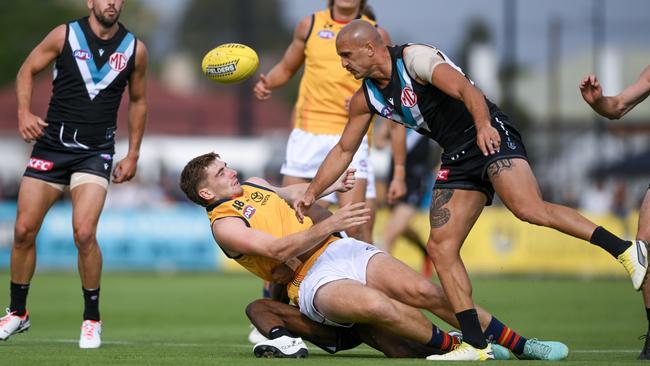
The AFL acted more swiftly than any other Australian sporting organisation to address the spectre of concussion.
It has established its Concussion Steering Group which consists of five different areas of research and action.
It comes at the issue from the perspectives of medical; research and innovation; state and community football; risk, insurance and legal; and communications and media.
In 2021 it introduced the AFL concussion guidelines which imposed minimum standards such as the minimum 12-day preclusion period after a concussion diagnosis.
However, so rapidly is the research moving that even those standards seem to have been overtaken.
In February the Australian Institute of Sport, in conjunction with Sports Medicine Australia launched its Concussion and Brain Health Position Statement and the Australian Concussion Guidelines for Youth and Community Sport.
They mandate a 21-day preclusion period and no return to training unless the player has been symptom-free for at least 14 days.
Even then some concussion reformers say it isn’t long enough.
The AFL’s medical advisers recommend the shorter time but it seems inevitable that the AFL will have to comply with those higher standards.
That will present problems to all clubs, given the difficulty having players out of action for so long will impose.
There will have to be more players on AFL lists. It will more difficult for suburban and country footy teams.
On another front, the AFL is preparing to defend itself against a class-action for damages. Headed by former Geelong player Max Rooke, it joins dozens of players who played for VFL/AFL clubs between 1985 and 2023.
“The injuries suffered by this group of AFL players, as a direct result of the concussions sustained while playing Aussie rules, has had a devastating impact on their lives and the lives of their loved ones,” said the lawyer representing the case.
The law does move in strange directions sometimes, but it’s difficult to see how the AFL can be responsible for injuries that players receive, unless of course the workplace was unsafe.
An example of an unsafe workplace was the rubber disc in the centre of Football Park that Crows ruckman Shaun slipped on while contesting a centre bounce.
Carlton player, Luke O’Sullivan missed the whole 1993 season after he injured his knee when the poorly laid turf at Waverly gave way. Geelong star Tom Stewart was injured last year when he slipped on the MCG turf that had been unsatisfactorily re-laid after a music concert. Those players would seem to have a case against the AFL.
However, in a normal game of football, we play the game knowing that there is always a risk of injury.
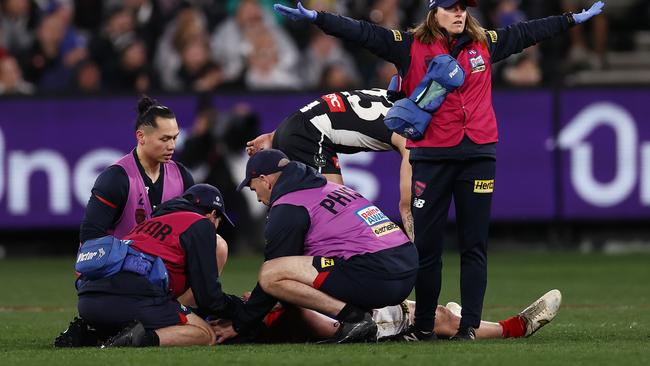
This class action focuses only on the effects of concussion, but why should this be any more serious than the other physical injuries that are a legacy of any footballer’s career?
The AFL’s defence is that players willingly play the game knowing that there is a risk of injury.
Of course they do – as we have done throughout the history of the game.
The love of the game and the excitement of the physical contest overrides any concerns that we may be injured. It’s the same reason people participate in extreme sports where the dangers are inherently greater?
The ramifications of this class action being successful are enormous.
Every player who has played the game at a senior level has been concussed at some stage.
All sport, let alone football, cannot afford for the action to succeed because it will open the floodgates for further litigation that no sport can afford.
Unwittingly, Sam Powell-Pepper has become collateral damage in this saga as the AFL seeks to present itself as a sanitised sport.
Regardless of how some cowards on social media would describe him, every coach would love to have players with his determination to win the ball.
Port Adelaide should have appealed the decision.
More Coverage
Originally published as Tribunal can’t see through concussion controversy and rule objectively anymore | Graham Cornes




